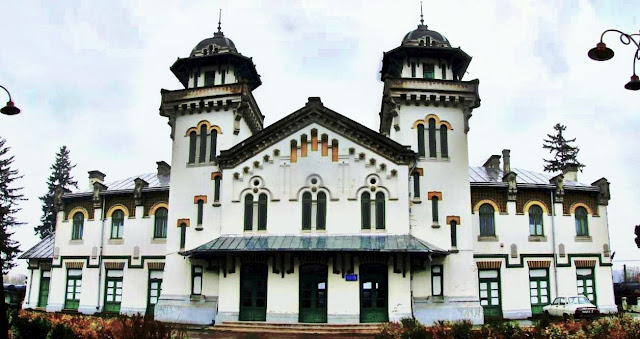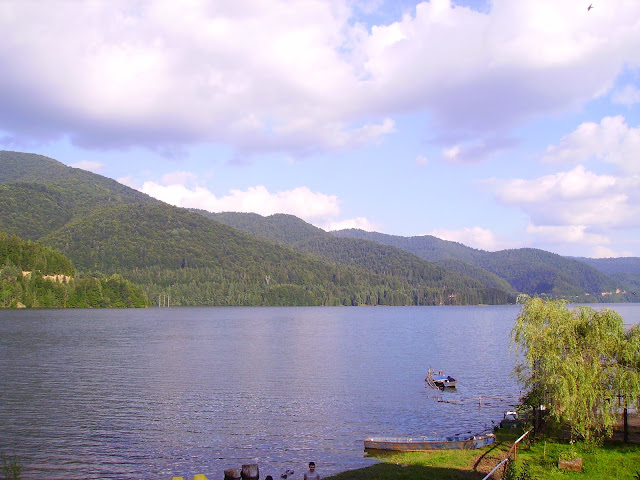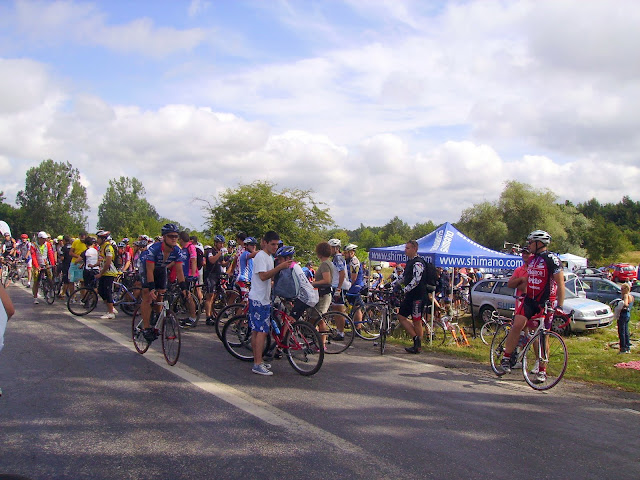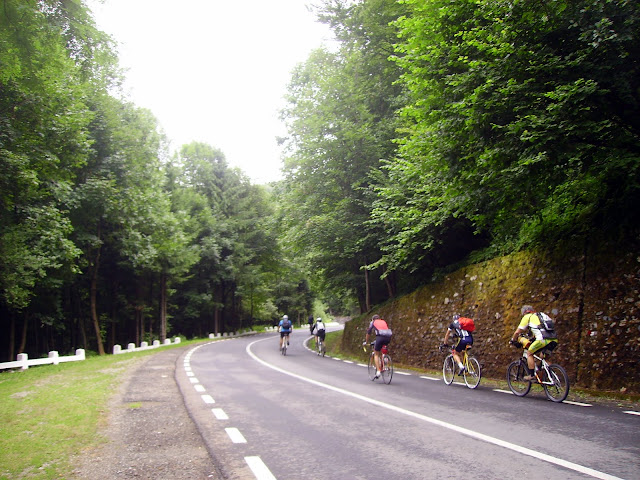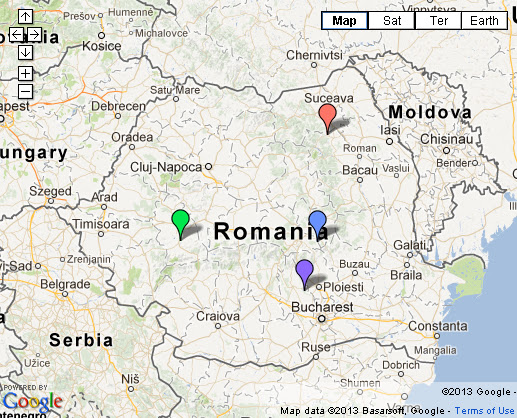The colour is determined by the chemical composition, mainly clinoptilolite , a complex hidrated Sodium Potassium Calcium Aluminum Silicate. It has the interesting property of absorbing cations, having been used even for detoxification of the environment after the Tschernobyl accident.
This being said I decided to go there, visit Slanic, take the climb under my wheels and see the rock for myself. It happened on August 28th 2011.
At 8.30 AM I got down from the train in Ploiesti Sud station heading to Gageni and Plopeni (DJ 102 road), with significant traffic in the weekend.
After Plopeni, the railroad linking Ploiesti to Slanic is accompanying the road until its final destination. There is now a direct train from Bucharest, run by the private operator TransFeroviar every morning.
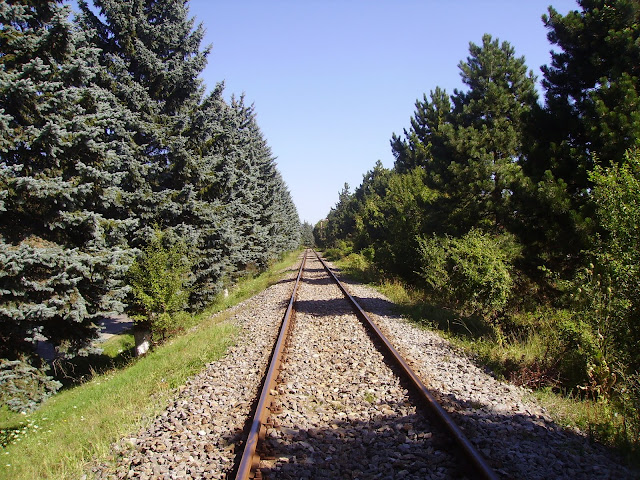
I's a road worth taking by bike - with hills and valleys, passing through nice villages.

I finally arrived in Slanic and stopped for a little break.
The resort was full of people, came to enjoy the sunbeam on the shore of the Salt Lake, as well as visiting the underground saline.

Then I headed straight to the green mountain, which can be observed from the resort's centre. You just have to follow the Green Rock street ("Piatra Verde", in Romanian).

Then I headed straight to the green mountain, which can be observed from the resort's centre. You just have to follow the Green Rock street ("Piatra Verde", in Romanian).


The road is paved in concrete blocks, as it was too steep to be asphalted conventionally. It climbs 200 metre along an 1.5 km route to the top.


The panorama that unfolds above fully rewards the daring cyclist. It's quiet because few people are going up there to disturb nature.



A driver had just stopped his car to allow the engine and the boiling water to cool off. He goggled owards me and my bike and said I deserved a picture after this devilish climb 

From the Green Rock the road descends through a forest.
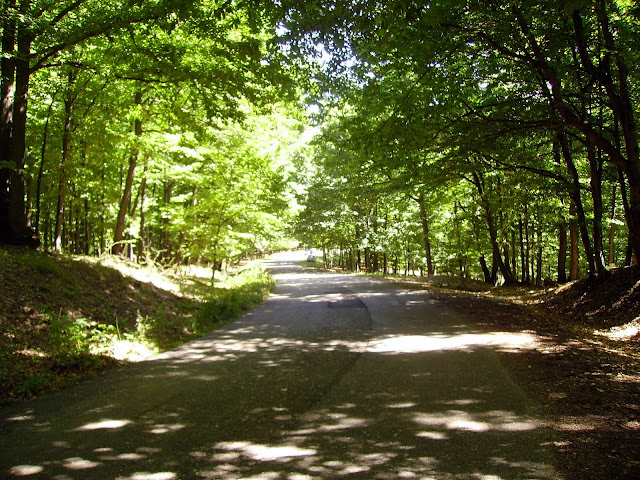
After coming out of it, you can admire the Grohotis Mountains to North-West.

Then I returned to Ploiesti along DN1A national, again a crowded road. But it didn't matter, as I saw what I wanted along my trip.
This is the map of the little tour taken :
Some nice spots this country has, especially when discovered by bike ! 
